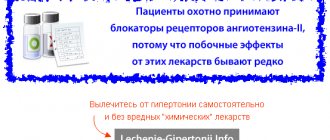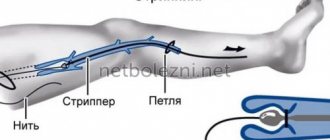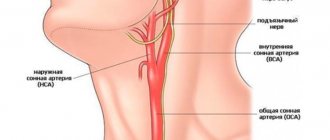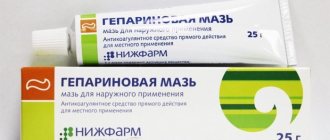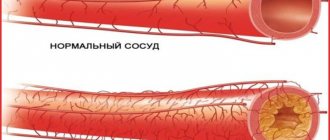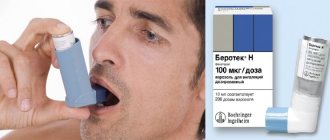Valsartan is a drug that lowers blood pressure (that is, the tablets produce an antihypertensive effect). The class of hypertensive medications includes many drugs, of which valsartan is the most studied: according to published medical data. According to statistics, the evidence base for the drug’s action includes more than 140 thousand patients.
Valsartan was the top-selling high blood pressure drug between 2008 and 2010. Sales statistics take into account not only the Russian Federation, but the whole world. One of the reasons for the popularity of the drug is the low price of valsartan.
Instructions for use
The dosage depends on the effectiveness of the drug. The average recommended dose is valsartan 80 mg per day at a time or 40 mg twice a day. If the expected result is not observed, the dose is gradually increased. The extreme limit is 320 mg/day, divided into 2 doses.
When to expect action:
- The effect will occur 2 hours after you take the drug;
- The medicine will act for a day;
- Blood pressure stabilizes 3 weeks after the start of treatment;
- Maximum effectiveness is observed 4 weeks after the start of the course.
When taken, the tablets are swallowed and not chewed. You need to drink plenty of water.
The given time frames are approximate, since more accurate forecasts must be made based on specific data.
For some, valsartan will have a stronger effect (this means that the dosage needs to be reduced), for others it will be too weak (in this case, the dose will have to be increased if you want to achieve the effect with this particular medicine).
Why your left temple may hurt - read more in this article.
If the effectiveness of the drug is not clearly expressed, a higher dosage is prescribed (as indicated) or diuretics are added to the course of treatment (when using them, permanent monitoring by a doctor and frequent testing are required).
Valsartan: indications for use
The drug valsartan is prescribed for heart failure and chronic low blood pressure (hereinafter referred to as BP). The drug can be used after myocardial infarction.
In their group (sartan) these are the only tablets that cannot negatively affect the condition and functioning of the body after a heart attack.
Valsartan tablets are used by those who have taken digitalis, diuretics, beta-blockers or inhibitors.
Release form
Valsartan is available in tablet form at 40, 80 and 160 mg. Not only the price of the packages is different, but also the filling of the drug:
- At 40 mg, the additional components are croscarmellose sodium, microcrystalline cellulose, magnesium stearate and dye (it is harmless);
- Valsartan 80 and 160 includes, in addition to those listed above, another auxiliary element - aerosil.
Tablets are not the only form of release. At the pharmacy you will find valsartan in granules, powders and capsules. The drug is sold exclusively by prescription, although it is possible to order it through online pharmacies.
The product is stored for 3 years. After the statute of limitations has expired, it is strictly forbidden to accept it.
Self-prescribing a medication (self-medication) can lead to unexpected results - from failure to provide any therapeutic effect to kidney failure and death.
Contraindications
Contraindications to valsartan are minimal. The main emphasis is on sensitivity (allergy) to the components of the drug and the presence of pregnancy (+ lactation period).
It is unknown how valsartan affects the child’s body, so its use under 18 years of age is not recommended, although the drug can be prescribed in small doses. The effectiveness of the drug when used by children has also not been established, so it makes sense to use other drugs whose usefulness for the child’s body is beyond doubt. The age limit of 18 is arbitrary.
When should you take medication with caution?
The following diseases/deviations are not contraindications for valsartan, but require careful medical supervision:
- Sodium deficiency in the blood;
- Reduced blood circulation volume;
- Any disorders of the renal arteries;
- Dysfunction (abnormalities) of the kidneys;
- Insufficient liver function;
- Problems with bile flow;
- Cirrhosis of various types and degrees of development.
Interaction with other drugs and products
| If you take valsartan simultaneously with. | . it will happen. |
| Diuretics in high concentration | Blood pressure will drop sharply |
| Dietary supplements, haparin, salt substitutes with high potassium content, other drugs containing a large proportion of potassium | Potassium oversaturation |
| Indomethacin | The effectiveness of valsartan will decrease |
| Lithium carbonate | Lithium overdose (=intoxication) |
If you are taking RAAS inhibitors, be aware of possible changes in your kidney function.
And when using ACE inhibitors, patients with chronic cardiovascular failure often experienced acute renal failure, kidney dysfunction, and excess nitrogen levels in the blood. Very rarely, this has led to dangerous conditions, including death.
Pregnancy
The drug valsartan is not prescribed to pregnant women. During breastfeeding, use only in extreme cases.
Clinical trials have not proven that valsartan is excreted in breast milk, but experimental studies have proven that the drug is excreted in breast milk (although experiments were carried out on rats, it is believed that a nursing girl should not take this medicine so as not to harm the baby).
Side effects
Please note: side effects with valsartan are rare. Usually the course of treatment is not marred even by a headache.
Basically, negative effects are caused by non-compliance with the schedule for taking pills (or other form of release) prescribed by the doctor, or by exceeding the dosage.
Sometimes side effects occur when valsartan is combined with other medications without prior consultation with the doctor.
Indications according to instructions
Instructions for use recommend that Valsartan-Nan be prescribed to young people for the treatment of pathologies such as:
- Arterial hypertension. Sartan therapy is well tolerated by patients and is rarely accompanied by the development of side effects. The medication does not affect the electrolyte ratio and does not cause contraction of the bronchi or uterus. Unlike beta blockers, such as Bisoprolol, Valsartan does not inhibit cardiac conduction and does not change the pulse rate. Resistance to sartans does not develop. The duration of therapy is at least 2-4 weeks.
- Heart failure (HF). German and American scientists have proven that hypothiazide in combination with sartans in the treatment of heart failure helps reduce the risk of stroke by 40% and myocardial infarction (MI) by 25%. Valsartan tablets prevent remodeling of the left ventricular myocardium and preserve its contractile function.
- Nephropathy. Reducing protein loss in urine prevents secondary kidney shrinkage due to hypertension or diabetes mellitus. Valsartan Sandoz Plus stops the development of diabetic nephropathy and delays the development of renal failure.
- Cancer. Oncologists note that ARBs reduce the likelihood of malignant transformation of cells in the brain, gastrointestinal tract, lungs, bladder, and gonads.
- Angioplasty. The indication for prescribing Valsartan after coronary angioplasty is to reduce the frequency of stent narrowing and the number of reoperations.
Treatment with valsartan in combination with other drugs
In case of a heart attack, captopril is prescribed along with valsartan (it reduces the risk of complications that can be caused by a heart attack).
Valsartan is often used in conjunction with amplodipine (this is the active ingredient), which is contained in drugs such as vamloset and exforge.
In combination, the medicine is used when the patient is diagnosed with chronic heart failure. With elevated blood pressure and the post-infarction stage, valsartan is usually used as a stand-alone drug.
Overdose: symptoms and treatment
Statistically, an overdose is unlikely. It can be caused by an incorrectly prescribed amount of medication or self-medication. Its symptoms are arterial hypotension and heart rhythm disturbances. If you suspect an overdose, you should consult a doctor and immediately stop taking the medication. Treatment is to relieve drug symptoms. In the case of Valsartan hydrochlorothiazide, dialysis is ineffective. You should stop at gastric lavage.
Valsartan analogues
The closest analogues are valsacor, valsatran valz, valsatran zentiva, valsatran sandoz (plus), sandoz, valsartan n, diovan, valsartan plus, valsartan nan and others. These drugs differ in their components (both qualitatively and quantitatively).
In terms of marketability and prescribing, the most popular of the valsartan analogues are the following (according to the Vyshkovsky index):
You cannot change the medicine without permission, since the drugs may have a slightly different effect than the original valsartan.
Valsartan: reviews from practicing doctors and patients
Reviews about valsartan are generally positive. Of the most positive qualities, both patients and doctors note the following:
- Speed of action (after 24 hours blood pressure returns to normal);
- No contraindications (with rare exceptions);
- No side effects (with rare exceptions).
Patients note that when taking other medications that have an antihypertensive effect (i.e., lowering blood pressure), a side effect such as cough occurs, but when using valsartan, a cough does not appear.
However, please note: the side effect is individual, so you cannot count on its 100% absence.
In this article we will try to compare Valsartan, Losartan, Telmisartan, Eprosartan. Let's look at the comparative characteristics of their action, side effects and contraindications, as well as which sartan is better. The choice will depend on the patient's concomitant diseases. It is important to coordinate the choice of medication with your doctor, since each drug has its own contraindications, interactions with other drugs and mechanism of action.
Sartans appeared on the market relatively recently: in the last years of the last century. Over the past 30 years, many representatives of this group of drugs have appeared in pharmacies: Valz, Lorista, Lozap, well-known to many. In fact, there are several similar drugs, and in order to understand their features, similarities and differences, we will compare them.
Analogs
Analogues and generics of the drug “Valsartan” are mainly medications containing valsartan as an active ingredient. Among the common substitutes for Valsartan on the pharmaceutical market are:
- “Valsartan A”;
- “Valsasin”;
- "Valaar";
- “Valsakor”;
- “Walz”;
- “Valsartan granulate”;
- “Valsafors”;
- “Nortivan”;
- “Diovan”;
- “Sartavel”;
- And others.
A popular drug that quickly and effectively lowers blood pressure, it has a large number of side effects and a number of limitations for use, so we recommend its use only after careful consideration of the patient’s individual health profile. Particular attention during treatment with valsartan requires control of renal excretory function. It is also necessary to exercise caution when prescribing combination therapy with valsartan drugs in combination with other antihypertensive and diuretic medications.
A patient who has been prescribed such a therapeutic regimen must pay close attention to his state of health and, if any alarming symptoms occur, promptly consult with his primary doctor for possible adjustments to the treatment regimen.
General characteristics of sartans
Angiotensin II receptor blockers (ARBs) are called sartans. To understand the principle of their operation, you need to consider the mechanism of hypertension formation:
- when blood circulation in the kidneys deteriorates, the body releases the substance renin;
- renin converts the substance angiotensinogen into angiotensin I;
- angiotensin I is converted to angiotensin II;
- Angiotensin II binds to receptors, causing vasoconstriction and increasing blood pressure.
Sartans block angiotensin II receptors, therefore, during treatment with these drugs, blood pressure does not increase, but returns to normal and stabilizes.
Unlike other classes of hypertensive drugs, ARBs are well tolerated in most patients and do not cause the common side effect of ACE inhibitors—a dry, persistent cough. Other undesirable effects, such as erectile dysfunction or increased potassium concentration in the blood, are also less common. Also, sartans are not addictive and do not have withdrawal symptoms.
Drug interactions
The instructions for use of the drug Valsartan contain a section with features of interaction with other medications:
- In combination with potassium-sparing diuretics, the plasma potassium concentration increases.
- When combined with potassium medications, the plasma potassium content increases.
- In combination with lithium preparations, the lithium content in human plasma increases.
- When combined with non-steroidal anti-inflammatory drugs, the effect of Valsartan is reduced and kidney function is disrupted.
- In combination with antagonists of angiotensin II special receptors, a malfunction of the kidneys is observed, the risk of a drop in blood pressure increases, and a double blockade is recorded
- RAAS (human hormonal system), hyperkalemia develops.
Before using the medicine, you must inform your doctor about what other medications you are taking and in what dosages. This is necessary for correct adjustment of the norms for taking Valsartan.
Valsartan does not interact with all drugs; you must follow your doctor’s instructions
Comparative characteristics of sartans
The choice between sartans (Losartan, Valsartan, Telmisartan, Eprosartan) can be made by examining and comparing the brief characteristics of each of them.
Losartan
Losartan (as well as Candesartan and Irbesatran) are biphenyl tetrazole derivatives. This drug can be found in the pharmacy under the following trade names:
- Lorista;
- Lozap;
- Renicard;
- Vasotens;
- Karzatran.
| Peak action | Half-life | Frequency of reception | Dose per day | Bioavailability |
| 1-4 hours | 6-9 hours | 1-2 times a day | 50-100 mg | 33% |
Losartan and Candesartan are prodrugs, that is, substances that are converted into drugs only in the liver. If liver function is impaired, the effectiveness of the drug will be lower than expected. In this case, it is better to use other sartans that are not prodrugs - that is, any ARBs besides Losartan.
Valsartan
According to the chemical structure, Valsartan is a non-cyclic compound.
Valsartan is available under the trade names:
- Walz;
- Valaar;
- Nortivan;
- Valsacor;
- Tareg.
| Peak action | Half-life | Frequency of reception | Dose per day | Bioavailability |
| 2-4 hours | 6-9 hours | 1 time per day | 80-320 mg. | 25% |
Valsartan is the only ARB recommended for use in the treatment of acute myocardial infarction. It is known that the use of this drug increases survival in the post-infarction period by up to 25%.
Telmisartan
Telmisartan is a non-biphenyl tetrazone derivative. Sold under the trade name Mikardis. This drug is the only second-generation sartan available, so its pharmacodynamics and pharmacokinetics are superior to drugs from other groups of ARBs.
| Peak action | Half-life | Frequency of reception | Dose per day | Bioavailability |
| 30 min. – 1 hour | More than 20 hours | 1 time per day | 40-160 mg. | 42-58% |
The main difference between the drug Telmisartan is its elimination from the body: through bile and feces. Unlike other sartans, which are excreted through the kidneys, this drug can be used in patients with severe renal failure.
Eprosartan
Eprosartan is a non-biphenyl netetrazole, sold under the name Teveten.
| Peak action | Half-life | Frequency of reception | Dose per day | Bioavailability |
| 1-2 hours | 5-9 hours | 2 times a day | 400-600 mg. | 13% |
The only category of ARB that contains neither biphenyl nor tetrazole groups.
How to use and in what dosage
Dosages and dosage rates depend on the nature of the disease and directly on the patient’s condition.
- As a rule, when arterial hypertension is diagnosed, the doctor prescribes a one-time dose of medication with a dose of 80 mg. The maximum permissible daily dosage is 320 mg.
- If chronic heart failure is noted, it is recommended to take 40 mg tablets 2 times a day. With normal tolerability, the dose can be gradually increased to 2 times a day, 160 mg. It is recommended to take the highest dosage of the active substance in 2 doses.
- For patients who have suffered a myocardial infarction, the drug is first prescribed to drink 20 mg twice in the morning and in the evening. Thus, the concentration of the active substance can be gradually increased to 160 mg.
You can switch to the norm of 80 mg twice a day 2 weeks after the start of treatment. It is recommended to stop at a dosage of 160 mg per day after 3 weeks after the start of the therapeutic intervention.
Side effects comparison table
Typically, sartans are well tolerated by patients, but in individual cases, undesirable effects may develop.
Valsartan is a modern substance that lowers blood pressure (BP) and protects internal organs from the harmful effects of hypertension. It is included in many drugs as the only component, and also serves as an integral part of ready-made combined dosage forms - tablets, including several antihypertensive medications.
Read in this article
Compound
Valsartan is included in tablets and capsules. It is mixed with excipients, including microcrystalline cellulose, croscarmellose sodium, povidone, silicon dioxide and magnesium stearic acid.
The tablets are coated with a film that contains neutral substances - macrogol, talc, dyes.
In addition to tablets, the drug is available in capsules. In addition to gelatin, they contain dyes - yellow iron oxide and titanium dioxide.
Valsartan tablets and capsules do not contain lactose, so people intolerant to this carbohydrate can take the medicine without negative health consequences.
Tablets are available in dosages of 40, 80 and 160 mg, and capsules - 20, 40, 80 and 160 mg.
And here is more information about Sartana’s preparations.
Mechanism of action
Valsartan is prescribed for hypertension. Its action is associated with blockade of receptors for angiotensin II, the most powerful vasoconstrictor substance secreted in the body.
The precursors of angiotensin II receptor antagonists, ACEIs, blocked the enzymatic reaction of angiotensin II formation. However, it could be formed in the body in other ways, so ACEIs are not always effective for high blood pressure.
Valsartan and other angiotensin receptor antagonists more completely block the mechanism of increasing blood pressure. However, they also have a drawback: they act only on the 1st type of such receptors. This causes the accumulation of “unclaimed” angiotensin II in the blood and its effect on the 2nd type of such receptors. Therefore, valsartan also cannot be considered a universal remedy for hypertension.
Valsartan is neutral in relation to many processes important for the heart - the transport of potassium ions, the level of cholesterol, uric acid, triglycerides and glucose. This makes it possible to use it for various diseases of the endocrine system.
Drug compatibility
Concomitant use of other antihypertensive drugs (amlodipine or hydrochlorothiazide) may increase the effect of valsartan on blood pressure. Therefore, regular blood pressure checks are required. Combination with the antihypertensive aliskiren is not recommended, as the risk of side effects: potassium deficiency, severe hypotension and decreased nephron function increases, which is important in diabetics and patients with severe nephropathy.
Aliskiren
Concomitant administration of potassium-containing diuretics, potassium preparations or other potassium concentrates (heparin) should be taken with caution and only with regular monitoring of potassium by the attending physician.
Increased blood concentrations of lithium (a psychopharmacological medication) and its toxicity have been reported when administered concomitantly with an angiotensin-converting enzyme inhibitor. However, there is no clinical experience with the concomitant use of valsartan and lithium. But medical monitoring of lithium concentration in the blood is recommended.
Valsartan should not be mixed with alcoholic beverages (alcohol).
Contraindications
Valsartan has virtually no contraindications. It should not be taken by pregnant women or those who are intolerant to the medication.
Harm to a baby during breastfeeding has not been proven, but when using valsartan it is better to avoid breastfeeding.
This remedy has also not been studied in children.
Valsartan can be used with caution in the following conditions:
- renal artery stenosis and renovascular hypertension (under the control of creatinine, urea);
- low sodium content in the blood, low circulating blood volume;
- obstruction of the bile ducts;
- the need to drive vehicles.
Renal artery stenosis
Medicines with which valsartan is not recommended to be combined:
- high doses of diuretics – a strong decrease in blood pressure is possible;
- Veroshpiron, Heparin, supplements containing potassium instead of sodium (“salt for hypertensive patients”) – a sharp increase in potassium in the blood is possible;
- Indomethacin – possible increase in blood pressure;
- lithium carbonate – lithium intoxication is possible.
Possible complications
Despite the fact that Valsartan is practically the most modern drug for hypertension, it also has side effects:
- decreased blood pressure, dizziness when getting out of bed;
- headache;
- nausea, diarrhea;
- kidney dysfunction;
- anemia, a decrease in the number of neutrophils - immune cells;
- skin rash, itching, vascular inflammation, allergic swelling;
- weakness, dry cough, sore throat, increased incidence of ARVI.
If any of these effects occur, it is recommended to reduce the dose of the medicine and consult a doctor to change the drug.
Side effects
Long-term therapy with a vasodilator may lead to side effects. The main ones include insomnia, dizziness and fainting, depression and headaches. From the cardiovascular system, a sharp decrease in blood pressure and a hypertensive crisis are possible. Long-term treatment with the drug has a negative effect on the respiratory system, expressed in the form of periodic cough. Valz tablets often lead to dysfunction of the liver and kidneys, resulting in severe intoxication of the body. In rare cases, patients experience nausea, vomiting, diarrhea and nosebleeds. The general condition when side effects occur is characterized by weakness, drowsiness, and apathy to what is happening around.
Individual intolerance to the medication is expressed by rashes on the skin, itching and swelling of the mucous membranes. The patient may experience muscle and joint pain, as well as general malaise. If you notice the first signs of a side effect, you should stop taking the drug and immediately consult a specialist.
Analogues of Valsartan
As an active ingredient, valsartan is included in the following drugs (complete analogues):
The same group of angiotensin II receptor antagonists includes the following substances:
- losartan;
- eprosartan;
- irbesartan;
- candesartan;
- telmisartan;
- olmesartan medoxomil;
- azilsartan medoxomil;
- fimasartan.
After consultation with a doctor, it is possible to replace valsartan with drugs containing the active ingredients listed above.
Watch the video about the drug Valsartan:
Also, for the convenience of patients and to enhance the effect, ready-made medicinal combinations of valsartan with other drugs are available:
- with diuretics – Valz H, Valsartan-Hydrochlorothiazide-Akrikhin, Valsacor N, Valsacor ND, Duopress, Co-Diovan,
- with amlodipine - Amlodipine-Valsartan-Richter, Vamloset, Exforge, Exfotanz;
- with amlodipine and hydrochlorothiazide - Co-Exforge, Tritensin.
Valsartan is one of the modern antihypertensive drugs that reduce blood pressure and protect the heart, blood vessels, brain, kidneys and eyes from the destructive effects of hypertension.
And here is more information about the use of Lozap for blood pressure.
Valsartan, which is safe, studied and works well for patients, is becoming increasingly popular among doctors and patients. Its peculiarity is that this drug can replace any drug from the ACEI group if it causes a dry cough in the patient.
The drug Lozap for blood pressure helps in many cases. However, you cannot take the pills if you have certain diseases. When should you choose Lozap, and when should you choose Lozap plus?
Modern, newest and best drugs for the treatment of hypertension allow you to control your condition with the least possible consequences. What drugs of choice do doctors prescribe?
The drug enalapril for hypertension helps many patients. There are similar ACE inhibitors that can replace it in treatment - captopril, Enap. How often should I take it for blood pressure?
Sartans and medications containing them are prescribed to reduce blood pressure if necessary. There is a special classification of medicines, and they are also divided into groups. You can choose combined or the latest generation depending on the problem.
Due to stress, untreated hypertension and many other reasons, a cerebral hypertensive crisis may occur. It can be vascular, hypertensive. Symptoms include severe headache and weakness. Consequences: stroke, cerebral edema.
In the treatment of hypertension, some drugs include the substance eprosartan, the use of which helps normalize blood pressure. The effect is taken as a basis in such a medicine as Teveten. There are analogues with similar effects.
Arterial hypertension and diabetes mellitus have a destructive effect on the blood vessels of many organs. If you follow your doctor's recommendations, you can avoid consequences.
Prescribed for hypertension and heart failure, Vazar, the use of which begins under the strict supervision of a doctor. The dosage of 80, 160 mg is selected individually. A description of the tablets and their analogues is in our article.
If a diagnosis of angina pectoris has been established, treatment will first be directed to the root cause of the problem, for example, ischemic heart disease. Stable angina is treated with medication in the hospital.
pharmachologic effect
Manufacturer: Ozon LLC, Russia / JSC Vertex, Russia
Release form: film-coated tablets
Active ingredient: valsartan
Synonyms: Valsacor, Diovan
Valsartan is an angiotensin II receptor antagonist. Working at the receptor level, the drug reduces blood pressure.
The effect occurs within two hours after taking the tablet. After 4-6 hours, the maximum reduction in blood pressure is achieved. The persistent antihypertensive effect lasts 24 hours.
To achieve a stable effect, a course of 2 weeks is prescribed. Typically, patients with arterial hypertension take the drug in long courses.
If you abruptly stop taking the medication, withdrawal syndrome does not develop, which is an advantage of Valsartan over some analogues.
The drug is taken strictly as prescribed by a doctor and under his supervision. You can buy Valsartan or its analogues at a pharmacy only with a prescription.



